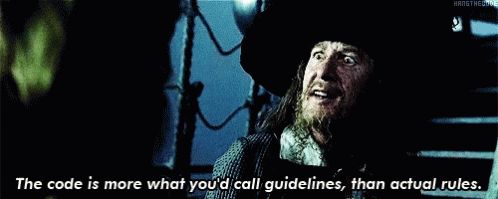Textual Criticism, What it is and Why It Matters (III)
Methodology and an Assessment of Matt 17:21
Nota Bene: If you have not read the first and second entries in this series, it might be helpful to do so for the context of this post. The first article can be found here, the second here.
Methods of Textual Criticism
With over 5,000 manuscripts (mss) in Greek alone, the amount of variants seems interminable, and since no two documents are identical, the task to determine the original text appears herculean.1 As daunting as it may seem, many of the divergences between mss are negligible and explainable, which is reassuring, but some variants are incredibly significant—there is no clear answer and the decision significantly impacts what the texts says. It is comforting, though, that we likely have the original text hiding amongst the hiccups, blunders, and tampering that have happened in the history of transmission of the New Testament. Below we will discuss the general criteria for assessing these various manuscripts, but keep in mind, they are more like guidelines than actual rules.
These methods started to develop because scholars noticed that the Byzantine witness was not flawless. There were mss in the other families that had better readings, so it became necessary to develop a methodology for comparing these documents. The art of textual criticism, in turn, is making an informed decision on what was most likely written originally, which can seem rather subjective. As Bruce Metzger states, “These considerations depend… upon probabilities, and sometimes the textual critic must weigh one set of probabilities against another.”2
First and foremost, the Scribes preserving the NT were human, so they were fallible. The process of copying a text by hand was laborious, monotonous, and strenuous for it took considerable concentration and acuity. A scribe would work for hours copying texts, so inevitably their eyes would grow weary and their mind would tire. This fatigue could quite easily lead a copyist to skip a word or lose track of where he was, and there were any number of possible distractions—such as a brother monk barging into the room to tell him about his latest brew. Who can say?

Scribal Mistakes
The following are a number of common bungles that could happen while a scribe was copying. Following each description, I have included the technical jargon in italics for convenience.
One additional thing to know about these Greek mss: there was typically no spacing or punctuation, and accentuation on vowels was inconsistent. Words would break at the end of a lines with not clear indication, so that was another hurdle for the copyists to overcome. Scribal penmanship was not always excellent, either, so imagine trying to copy an entire NT that was written in your doctor’s script. All this to say, there are numerous reasons why every NT ms is different, and why each one has erroneous variants.
Common Accidental Scribal Mistakes
When two consecutive lines begin with the same word or letters, a copyist’s eyes could accidentally skip portions, omitting part of the text—homoioarcton.
At the end of a line, a copyist’s eyes could jump down because the lines were nearly identical,—same word or letters—which would result in the deletion of a whole line—homoioteleuton.
Two nearly identical words, when grouped together on the same line, could also result in skipping a word.
Scribes sometimes would get lost in copying, and instead of omitting text, they would accidentally jump backwards and copy the same group of words twice—dittography.
This could also happen with letters, and sometimes a letter could be added.
At times, a scribe might accidently delete a letter—haplography.
While copying, the transposition of two letters might occur—metathesis.
Spelling errors were always a potential when letters were pronounced similarly and the scribe was copying a text being read aloud—iotacism.
Common Intentional Scribal Mistakes
Correction of perceived grammatical errors or stylistic awkwardness.
Substitution of words or additions, especially if a parallel passage existed and the scribe was more familiar with that text—harmonization or assimilation.
Combination of two variant readings into one, resulting in a protracted reading—conflation.
Insertion of a fabricated narrative or theological point not original to the text—interpolation.
Occasionally, scribal notes would accidentally find their way into the ms.
Theological disturbances could lead a scribe to alter the text so that it better adhered to his personal beliefs.3
For intentional alterations to the text, Metzger comments, “Odd though it may seem, scribes who thought were more dangerous than those who wished merely to be faithful in copying what lay before them.”4 Scribes who desired to “fix” the text, could ironically corrupt what was originally intended to be read. And, these mistakes were a known issue even in antiquity; Origin (3c.) complained about his Gospels mss, writing,
The differences among the manuscripts have become great, either through the negligence of some copyists or through the perverse audacity of others; they either neglect to check over what they have transcribed, or, in the process of checking, they make additions or deletions as they please. (Commentary on Matthew 15.14)
External & Internal Evidence
Now, as for analyzing the mss, there are two major groups of data for analysis: external & internal evidence. Note, there are always exceptions to the following. It is important to keep in mind that each variant reading must be weighed individually, and the same methodology or logic will not always apply due to the multifarious variables in each unique situation.
External Evidence (Characteristics about the Document)
Date—When was the manuscript produced? Typically, an earlier document is more reliable because there has been less time for corruption to occur. Fewer scribes have made fewer copies, so the human element of blundering is potentially minimized.
Geography (Provenance)—Where was the document composed? This is critical for assessing variants, so knowing the location of production is key. If you have one variant that is prolific in one geographical group, it is less likely to be authentic, and it is an aberration born from that particular textual family. If you have a wide geographical representation of a reading, it holds more water since it is far less likely for the same mistake to arise across multiple cities’ local texts.
Genealogy (Textual Dependence)—Assessing a variant is not necessarily a numbers game. If 100 mss have one reading and only 20 have another, the first reading should not incontrovertibly be trusted as the authentic text. If those 100 are all based on one ms—they are all genetically related—then that still only counts as 1. The first reading might be based on an error from the first document the 100 others were copied from. Numbers can assist in the assessment, but there are other factors that must be considered (i.e., date and geographical representation).
Character—Reliability and trustworthiness are qualities that must be built over time, both for humans and manuscripts. There is not a clear, exact method for determining a document’s dependability, but when a ms consistently has the preferred reading in cut and dried situations, you can build a case for the document’s faithfulness. When trusted documents are in agreement, their weight will be considerable compared to a numeric majority. This is an incredibly subjective standard, but the entire process is contingent on probability.
From this, not all evidence is weighted equally in all circumstances. After discussing the internal evidence, it will become more apparent that assessing mss is on a case by case basis, especially since the evidence is not always consistent, nor are all circumstances even remotely identical.
Internal Evidence (Characteristics about the Scribes and the Original Author)
Scribal habits
The more difficult reading is likely original—in all likelihood, a scribe would simplify the text rather than complicate it. So, if the grammar is not technically wrong, it is more probable that the simplified variant is not original.
The shorter reading is probably authentic—Scribes were far more likely to amend a text by expansion rather than deletion. Exceptions:
When Parablepsis has occurred, i.e., the scribe has omitted text inadvertently from his eyes skipping text whether by homoioarcton or homoioteleuton.
Intentional scribal deletion
In cases of suspected harmonization, the divergent wording is preferred over what would be identical. For instance, if Matthew has a variant reading that is identical to Mark, but another ms has a discordant reading against Mark, it is more likely that the dissimilar text is correct.5
Scribal emendations—see intentional scribal mistakes above
Authorial Consistency
Does a reading go against the standard style and vocabulary of the author throughout the book? If so, it is likely inauthentic.
Does it fit the immediate context?
How harmonious is the reading when compared to the rest of the book/corpus?
Methodology for Assessing a Variant Text
Setting all of this into practice may seem sisyphean. The uncertainty is ever-present, and the task is never fully complete. With each new variant, the process begins anew. Although the task appears difficult taking into account all the above factors, Metzger offers a sage, simplistic maxim for evaluating variants: “choose the reading which best explains the origin of the others.”6 With that, here are the basic steps for analyzing a textual variant.
Step 1 | The Textual Apparatus
Preliminarily, one should look at the textual apparatus for analyzing a dubious text, making a list of each variant’s supporting witnesses. This will help the critic see what issue is present and how many principle readings will have to be analyzed. This is what the textual apparatus looks like in the wild:
This probably looks like utter chaos, but if you recall in my second entry on textual criticism, I covered the different mss types and their notations. These symbols allow the textual critic to see how many mss support a particular reading, as well as the text-types.
Step 2 | Date & Geography
The next step involves two parts. First, some external evidence should be considered. The textual critic decides which reading is supported by the earliest mss and by the earliest text-types. Second, the geographical regions must be determined. It is imperative to know how widespread each reading is for evaluation. If a variant is extremely localized, that is not a good sign of originality.
Step 3 | Analysis of Witnesses
Third, the textual critic should become familiarized with the various witnesses backing each variant reading. Once the variant readings are analyzed based on external evidence and synced with their text-types, the critic makes a judgment on the preferred reading based upon the age of the mss, the geographical spread of a given reading, and the textual-types to which they belong.
Step 4 | Internal Evidence, Scribal Gaffes
The fourth step includes examining the variant readings in relation to internal evidence. This entails discerning which reading is the most difficult and would have given a scribe the most difficulty. There are times, though, where some readings are absurdly difficult, and these should be disregarded since their originality is questionable. Other scribal errors should be considered since scribes occasionally chose a reading which appealed to them because it supported their beliefs.
Step 5 | Authorial Consistency
Finally, the textual critic takes into account intrinsic probability. Which variant fits with the author’s style and usage within the larger context of both the present work and—when applicable—their corpus?
All in all, the final verdict should be decided based upon what most likely happened in the history of copying the text. The external evidence can only help the critic so much; at some point, logic and probability must help deduce what is most likely original.7 No single piece of evidence can determine originality.
Assessing Matt 17:21 | Practical Application of Textual Criticism
Now we come to the practical application of textual criticism and the debunking of the initial video. So, should Matt 17:21 be omitted from our current translations, or is this a mistake made by the publishers?
First, let us examine the textual apparatus:
How the publisher presents the material can be a bit confusing, but the first portion starts with the bracketed verse number “[21]” followed by Greek text. The Greek here is the variation, whereas the second portion that begins with “| txt” is what is believed to be original because that is what is present in the main body—here, specifically, an omission, i.e., the removal of v. 21.
Relating to dating, the more ancient mss contain the omission (א, B 4c.).
Geographically, “V. 21 is a secondary addition based on Mark 9:29 in the Western, Byzantine, and small parts of the Egyptian tradition.”8 The Alexandrian tradition (א, B) omits the verse, but v. 21 slipped in later. Here, we see the geographical spread favors the inclusion of v. 21. Keep in mind, though, this is just one factor for determining the authenticity of a reading.9
The internal evidence is fairly clear: a scribe at some point added Mark 9:29 (harmonization); it does not make much sense why the verse would have been deleted.10
From the authorial perspective, the verse feels out of place considering the context of what Jesus is saying. The disciples ask why they were unsuccessful in driving out the unclean spirit, to which Jesus retorts,
Because of your little faith. For truly, I say to you, if you have faith as a grain of mustard seed, you will say to this mountain, “Move from here to there,” and it will move; and nothing will be impossible to you.
To slap on the end of this saying, “But this kind never comes out except by prayer and fasting” is jarring and unnecessary. In fact, it almost stands in contradiction to what Jesus just said. The focus in Matthew’s version, in contradistinction to Mark, is the power of faith, whereas Mark’s is prayer. The scribe most assuredly knew Mark’s version and thought it was missing from Matthew’s text, even if it stands in contrast to the evangelist's intent.11
Conclusion
This has been an incredibly brief overview of textual criticism. There is much missing from this discussion, but I hope that what is present was more or less digestible. The task of the textual critic is exceedingly difficult because it is as much an art as it is a science; the problems we face are like working a puzzle without all the pieces.
At the very least, I have illustrated that the impetus for these entries—an errant TikTok on Matt 17:21—can be disregarded. It is exceptionally frustrating when two ignoramuses are able to manipulate and deceive their audience with half-baked ideas, when a plausible explanation was staring them in the face. Not to mention the conspiratorial grift is rather pathetic. Afterall, it is easier to blame a phantom enemy than face the reality that there might be errors in the textual history of the NT.
If you enjoyed this short series on textual criticism, consider giving the posts a like, and if you have any questions or observations, be sure to put them in the comments below. If you haven’t already, would you kindly hit the subscribe button below for more awesome New Testament content.
For more on textual criticism, consult this short bibliography that follows. These texts influenced and informed this entry, and I will not be providing citations for the summary of general information.
N. Birdsall, “The Recent History of New Testament Textual Criticism (from Westcott and Hort, 1881, to present)” in Aufstieg und Niedergang der römischen Welt, eds. H. Temporini and W. Haase (Berlin: De Gruyter, 1992), 99–197.
B. Ehrman, The Orthodox Corruption of Scripture (New York: Oxford, 1993).
B. Ehrman and M. Holmes, eds., The Text of the New Testament in Contemporary Research (Grand Rapids: Eerdmans, 1995).
R. Brown, An Introduction to the New Testament (New Haven: Yale, 1997), 48–54.
B. Ehrman and M. Holmes, The Text of the New Testament in Contemporary Research 2nd rev. ed. (Grand Rapids: Eerdmans, 1995).
J. Elliott and I. Moir, Manuscripts and the Text of the New Testament (Edinburgh: Clark, 1995).
E. Epp & G. Fee, The Studies in the Theory and Method of New Testament Textual Criticism (Grand Rapids: Eerdmans, 1993).
M. Holmes, “Reconstructing the Text of the New Testament” in The Blackwell Companion to the New Testament ed. D. Aune (Oxford: Blackwell, 2010), 77–89.
M. Holmes, “Textual Criticism” in Interpreting the New Testament eds. D. Black and D. Dockery (Nashville: Broadman & Holman, 2001), 4–73.
B. Metzger, A Textual Commentary on the Greek New Testament, 2nd ed. (New York: United Bible Societies, 1994).
B. Metzger, The Text of the New Testament 2nd ed. (Oxford: Oxford, 1968).—there is a 3rd ed.
B. Metzger, Manuscripts of the Greek Bible (New York: Oxford, 1981).
B. Westcott and F. Hort, The New Testament in the Original Greek (Cambridge Macmillan, 1881; 2nd ed. 1896).
B. Metzger, Textual, xi.
This further complicates the qualifications necessary to be a textual critic. One must also be familiar with the various types of Christianity that existed in antiquity in order to understand why texts might have been altered. Peruse B. Ehrman, Misquoting Jesus (New York: HarperCollins, 2005), 151–175.
Metzger, Text, 195.
A scribe is far more likely to replace text that is not recognizable—at least to him—with something that is. For instance, if he knows Matthew’s version of a story and Mark’s is dissimilar, the Scribe might think the previous copyist made a mistake in Mark and would then replace Mark’s text with what is in Matthew’s.
Metzger, Text, 207.
As R. Brown, Introduction, 51 writes, “At times a choice as to which of competing readings is more plausible cannot be decided on the ms. evidence alone because the weight of the textual witnesses may be about evenly divided.”
U. Luz, Matthew (Minneapolis: Augsburg, 2001), 405.
Holmes, “Reconstructing,” 84 notes, “…today nearly all New Testament textual critics utilize an approach that has come to be known as reasoned eclecticism. This approach seeks to apply to the New Testament, on a passage-by-passage basis, all the evidence, tools, and criteria available for the task at hand in an effort to reconstruct the text. No one rule or principle can be applied nor any one MS (no matter how reliable) or group of MSS (no matter how large) followed in a mechanical or across-the-board fashion; each variation unit must be approached on its own merits and as possibly unique.”
As Ehrman, Misquoting, 55–56 remarks, “There were other reasons for scribes to make an intentional change—for example, when they came across a passage that appeared to embody a mistake needed to be corrected, possibly a contradiction found in the text, or a mistaken geographic reference, or a misplaced scriptural allusion. Thus, when scribes made intentional changes, sometimes their motives were as pure as the driven snow. But the changes were made nonetheless, and the author’s original words, as a result, may have become altered and eventually lost.”
Metzger, Textual, 35 comments, “Since there is no satisfactory reason why the passage, if originally present in Matthew, should have been omitted in a wide variety of witnesses, and since copyists frequently inserted material derived from another Gospel, it appears that most manuscripts have been assimilated to the parallel in Mk 9:29.”










